Revision Notes: Waste Management-II | Geography Class 10 ICSE PDF Download
Impact of Waste Accumulation
If waste is not properly disposed of and allowed to accumulate, it can have severe impacts on both our environment and health:
- Health and Sanitation Concerns: Unattended waste starts to decompose, creating a breeding ground for pathogenic bacteria, viruses, and fungi. These organisms can spread disease to human communities.
- Air Pollution: The decomposition process releases various gases that pollute the surrounding air.
- Water Pollution: In the rainy season, rainwater can carry decomposed waste materials, which contain pathogens, into water bodies, leading to water pollution.
Spoilage of Landscape
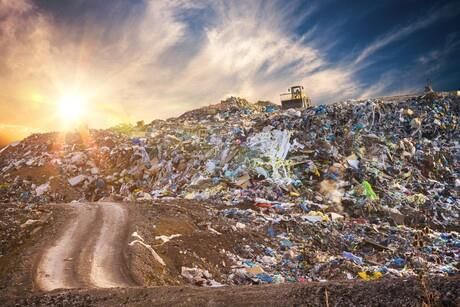
- Landscape Degradation: Waste accumulation not only detracts from the natural beauty of landscapes but also creates a habitat for rats and other disease-carrying organisms.
- Air Pollution and Acid Rain: The burning of coal, fuel, or wood emits sulfur and nitrogen, which combine with oxygen to form sulfur oxide and nitrogen oxide, respectively. These gases, when mixed with water vapor in the atmosphere, turn into sulfuric acid and nitric acid. This acidified moisture falls as acid rain.
- Damage to Monuments: Acid rain leads to the deterioration of historical monuments by reacting with their materials, like gypsum and calcium, causing corrosion. Notable examples include the Parthenon in Athens, the Colosseum in Rome, and the Taj Mahal in Agra.
Pollution
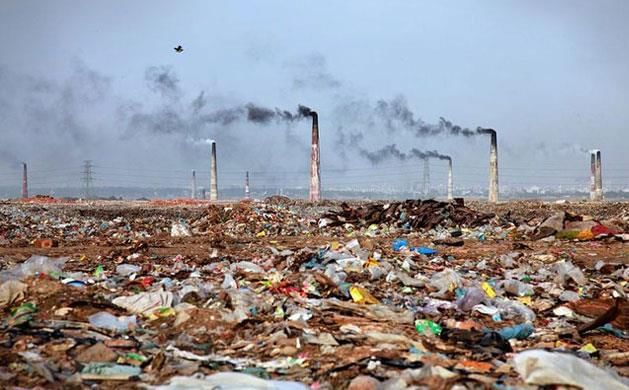
- Pollution occurs when harmful substances are introduced into the atmosphere. This can happen through the addition of toxic chemicals or gases.
- The accumulation of waste is a significant cause of pollution. Various sources contribute to this, including industries, household activities, hospitals, restaurants, and agricultural practices such as the use of fertilizers.
- Open dumping involves the disposal of waste in open spaces located away from urban areas. However, this method is unsafe and comes with several limitations. Different types of waste dumped together create breeding grounds for mosquitoes and flies. Moreover, when rainwater carries these wastes to nearby water bodies like lakes, rivers, or ponds, it leads to water pollution.
- Industrial waste often contains harmful chemicals like lead and mercury. These toxic substances can enter the food chain, affecting both animals and humans.
Eutrophication
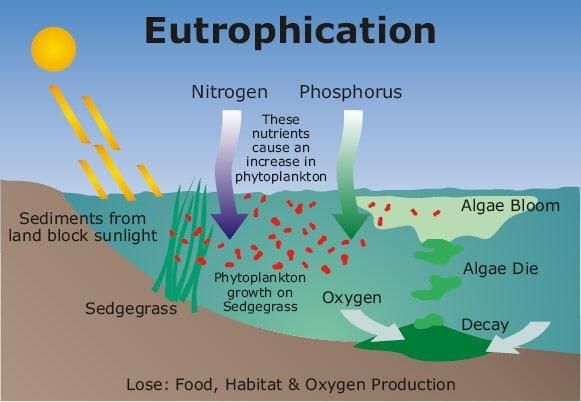
- Eutrophication is a process that can happen naturally or be caused by human activities, leading to a decrease in oxygen levels in water bodies.
- When nutrients and chemicals are released into water bodies through sewage and industrial effluents, they accumulate and promote the rapid growth of phytoplankton and algae.
- This excessive growth of phytoplankton and algae blocks the penetration of oxygen and sunlight into the water, creating a harmful environment for aquatic organisms.
- As a result, the lack of oxygen and sunlight can lead to the death of fish and other aquatic life.
Health Hazards
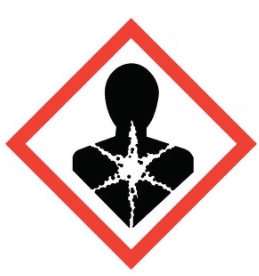
- Respiratory Issues: Air pollution can lead to respiratory infections and irritation in the eyes, nose, and throat. Symptoms may include headaches, nausea, dizziness, and allergic reactions.
- Chronic Diseases: Long-term exposure to polluted air can cause chronic respiratory diseases, lung cancer, cardiovascular diseases, and damage to the nerves, kidneys, and liver.
- Waterborne Diseases: Pathogens present in wastewater can contaminate water sources. When people consume this contaminated water, they can contract diseases such as typhoid, cholera, diarrhea, dysentery, and jaundice.
- Heavy Metal Poisoning: Metals like lead, mercury, and cadmium can be harmful if they enter the human body through contaminated water.
For example:
Itai-Itai Disease: Caused by cadmium poisoning in Japan.
Minamata Disease: Resulting from mercury accumulation in fish.
Lead Poisoning: Affects the blood system and can lead to behavioral disorders. - Radiation Exposure: Radiation is extremely harmful as it can cause genetic mutations and affect body cells. Exposed individuals may pass on genetic variations to their offspring.
- Health Risks: Lung cancer, brain cancer, thyroid cancer, sterility, and impaired eyesight are potential health risks associated with radioactive pollution.
Impact of Waste Accumulation on Terrestrial Life
The impact of waste accumulation on human health has been previously discussed. Now, let's explore its effects on plants, animals, and birds.
Effects on Plants
- Nitrogen Dioxide: Causes premature leaf drop and hinders plant growth, leading to reduced crop yields.
- Ozone: Enters plant leaves through stomata, where it reacts with water and other chemicals, damaging the leaves. Plants weakened by ozone become more vulnerable to diseases, pests, and droughts.
- Peroxyacetyl Nitrate: Leads to premature leaf drop and discoloration in leafy vegetables.
- Sulphur Dioxide: Has a bleaching effect on plants, causing loss of chlorophyll. This results in yellowing of leafy vegetables.
- Radioactive Pollution: Radioactive wastes persist in the environment for long periods and cause discoloration of trees. For example, after the Chernobyl nuclear accident, a nearby pine forest turned reddish-brown.
Effects on Animals and Birds
- Animals: May ingest toxic materials or polythene bags from waste, leading to the spread of diseases among them.
- Radioactive Waste: Underground disposal of radioactive waste can contaminate drinking water, posing risks to plants, animals, and humans.
- Birds: Consuming agricultural waste can result in defective egg shells and increased mortality rates.
Effects on Aquatic Life
- Biomagnification occurs when harmful substances like pesticides and insecticides accumulate in the food chain of marine and aquatic organisms. These organisms are then consumed by other living beings, leading to an increase in the concentration of these toxic substances at higher trophic levels. Bioaccumulation refers to the phenomenon of concentrated toxic deposition at the higher trophic level in the food chain.
Minamata Tragedy
- Minamata is a coastal town in Japan known for a tragic incident involving environmental pollution. A vinyl chloride factory in the area discharged effluents contaminated with methyl mercury into the sea. This toxic substance accumulated in fish, which were later caught and consumed by the local population.
- The consumption of these contaminated fish led to Minamata disease, a severe neurological condition affecting the central nervous system. Symptoms included difficulty in walking and speaking, and in extreme cases, the disease could be fatal. In response to this health crisis, Japanese authorities banned fishing in Minamata Bay to protect public health.
Safe Disposal of Wastes
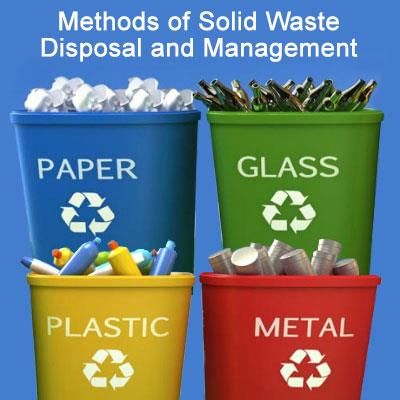
Safe disposal of wastes is crucial to protect the environment and public health. There are various methods for safely disposing of different types of waste.
Segregation
- Segregation involves separating waste into biodegradable and non-biodegradable categories.
- Biodegradable waste is further processed to produce useful products like biogas.
Open Dumping
- Open dumping is the practice of dumping waste in open spaces far from city limits.
- This method is unsafe and has several drawbacks, including the breeding of pests like mosquitoes and flies.
- Burning of these wastes pollutes the air, and during rains, rainwater can carry these wastes into nearby water bodies, causing pollution.
Sanitary Landfills
- In sanitary landfills, waste is disposed of away from the city.
- Waste is spread in layers, compacted to reduce volume, and covered with soil.
- Bacterial decomposition occurs in these landfills, and they are planted with vegetation.
- Precautions include not locating landfills in areas with high underground water levels to prevent pollution.
Composting
- Composting involves the aerobic decomposition of household and municipal waste by microorganisms.
- This method is beneficial as it transforms waste into humus, which enhances soil fertility.
Incineration
- In the process of incineration, municipal wastes are burned at a very high temperature. Many materials like metal do not get completely burnt. These may be then recycled. This method however also pollutes the air with fly ash and sulphur dioxide.
- It is also an expensive process as the installation of proper devices for controlling air pollution need to be installed. This method is useful because
- It kills pathogenic organisms and reduces the volume of wastes.
- It is useful for disposing petroleum and plastic wastes in chemical industries.
Management of Municipal Wastes
- Municipal authorities should collect solid wastes from each house.
- Horticultural and construction wastes should be collected separately and disposed of.
- Biomedical wastes and industrial wastes should not be mixed with municipal wastes.
- Municipal wastes should be carefully stored and segregated.
Drainage and Treatment of Effluents
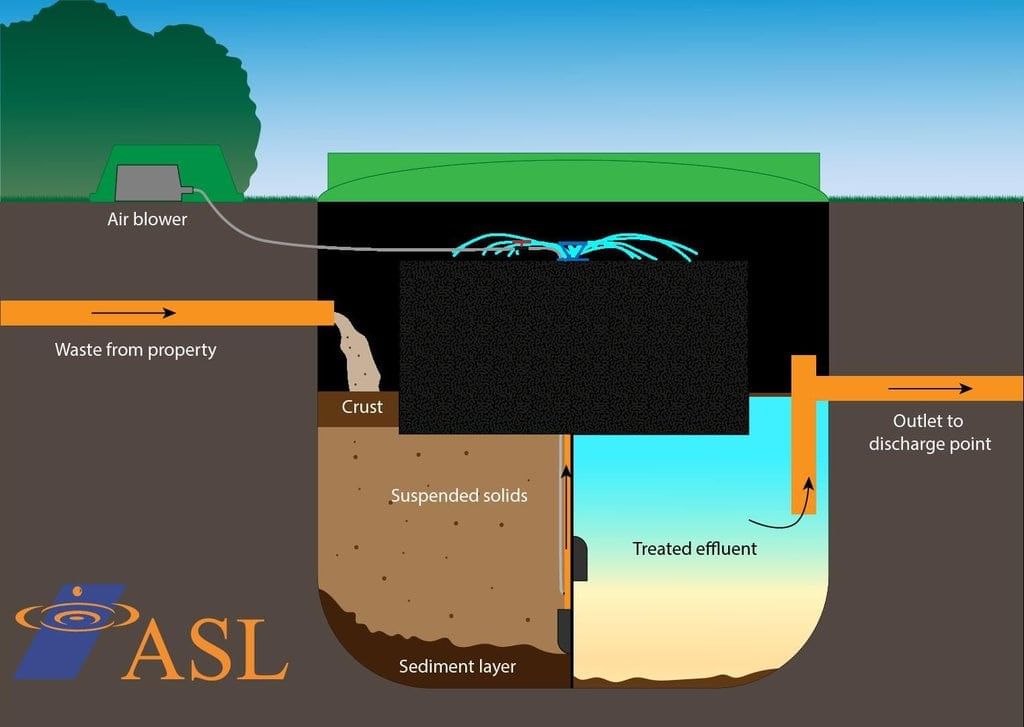
Wastewater needs to go through three stages of treatment during its purification process:
Primary Treatment
- During the initial phase of primary treatment, large particles like rags and sticks are removed from the water.
- To eliminate inorganic solids such as silt, eggshells, bone chips, and seeds (collectively referred to as grit), the wastewater enters a grit chamber where the water's speed is reduced. This allows the grit to settle, and it is then removed either manually or mechanically from the grit chamber.
- Afterward, the water flows into a sedimentation tank. In this process, water is stored in large basins where sand particles, silt, and other particles settle at the bottom. The accumulated impurities, known as sludge, are then removed.
- The sedimented water undergoes a chemical process called coagulation or flocculation, where further impurities are removed.
- Filtration is the final step in primary treatment, where suspended impurities are eliminated by passing the water through a barrier of sand matrix.
Secondary Treatment of Water
- In secondary treatment, organic matter present in the water is biologically degraded by microorganisms. When water enters a tank, it comes into contact with these microorganisms.
- Air is introduced into the tank through diffusers, providing the necessary oxygen for the microorganisms to break down the organic matter. The impurities settle at the bottom of the tank and are removed later.
- To ensure the water is safe, it is treated with chlorine gas to kill any remaining harmful organisms.
Tertiary Treatment
- Tertiary treatment involves removing nutrients such as nitrogen and phosphorus from the water. This treated water can be reused for industrial, agricultural, and domestic purposes.
Pollution Control Devices and their Functioning
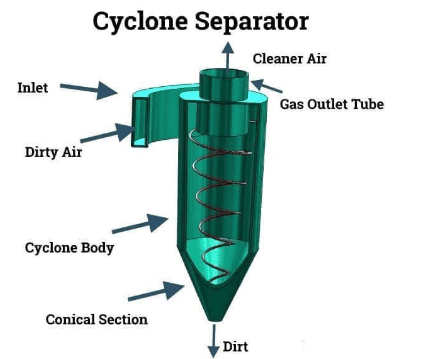
Scrubber
- A wet scrubber is a device designed to capture emissions of water-soluble gases like sulfur dioxide, nitrogen oxide, and ammonia.
- In a wet scrubber, spray nozzles are installed to spray water into the device in a downward direction.
- As polluted gases rise, particulate matter in the gas collides with the water droplets.
- Due to gravitational force, the water droplets containing the particulate matter settle at the bottom, segregating the pollutants.
Electrostatic Precipitator
- An electrostatic precipitator is used to remove fly ash after the combustion of coal or other materials.
- After combustion, polluted gas or smoke enters the electrostatic precipitator.
- The device is electronically charged, causing the polluted air and impurities to become negatively charged by gaining electrons on their surface.
- Negatively charged dust particles are attracted to the positively charged electrode plates and are deposited there.
- Impurities are dislodged by mechanical rappers and collected at the bottom of the unit in a hopper.
- An electrostatic precipitator is highly efficient, removing over 99% of impurities.
Electronic Precipitator
- Electronic precipitators are cost-effective to operate and highly efficient.
- They do not produce moisture plumes, making them environmentally friendly.
Reduce, Reuse, and Recycle
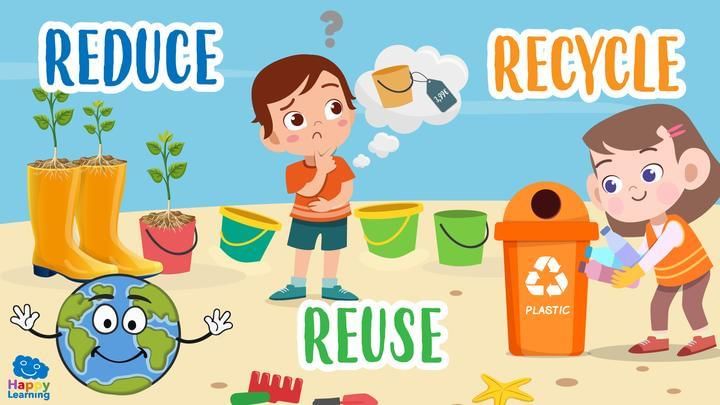
Reduce means minimizing the amount of waste generated, particularly from industries. This can be achieved by implementing more efficient production processes and reducing unnecessary packaging. Reuse involves finding new ways to use items that would otherwise be discarded, such as repurposing glass, rubber, and metal materials to create new products. Recycle refers to the process of treating waste materials to produce new products, like using recycled wood in the paper industry or recycling paper itself. Segregation of waste is also crucial, as it allows for more effective recycling and reduces the amount of waste that ends up in landfills. Fly ash from the paper industry, for example, can be used in road construction or to fill low-lying areas, reducing the need for new materials and minimizing waste.
Government Initiatives for Protecting the Environment
- The Environment Protection Act (1986) gives the central government the authority to coordinate with state governments and implement a nationwide program to prevent, control, and reduce environmental pollution.
- Environmental activists argue against the construction of large dams because they flood forested areas, disrupt river ecosystems, and harm both aquatic and terrestrial life. Additionally, building large dams displaces many people from their homes.
Social Initiatives
- Air Pollution Reduction: Encourage carpooling and the use of public transport to minimize air pollution.
- Waste Management in Housing Societies: Implement waste segregation and composting facilities within residential communities.
- Sustainable Housing: Promote the construction of homes with solar panels and water recharge systems.
Individual Initiatives
- Plastic Bag Replacement: Encourage the use of jute or cloth bags instead of plastic ones.
- Eco-Friendly Products: Promote the use of environmentally friendly products and reduce the use of chlorofluorocarbons (CFCs).
- Renewable Energy: Advocate for the adoption and popularization of renewable energy sources.
- Waste Recycling: Emphasize the importance of reusing and recycling waste materials.
- Rechargeable Batteries: Encourage the use of rechargeable batteries to reduce waste and environmental impact.
|
33 videos|86 docs|17 tests
|
FAQs on Revision Notes: Waste Management-II - Geography Class 10 ICSE
| 1. What are the primary health hazards associated with poor waste management? |  |
| 2. How does waste spoil the landscape? |  |
| 3. What are the effects of pollution on aquatic life? |  |
| 4. What lessons were learned from the Minamata tragedy? |  |
| 5. What is the significance of waste segregation in waste management? |  |




















